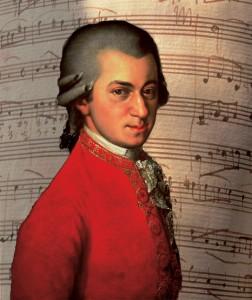You are here
Mozart’s Mysterious Final Works
Mozart left a couple of mysteries for history to solve when he passed away in 1791. Thanks to the hit play and film Amadeus, we know about the mystery of his Requiem. Who commissioned it? Who finished it? But his final symphonies continue to baffle experts.
Completed in 1788, his no. 39 in E-flat, the “great” G minor no. 40 that the ESO is playing in April and the Jupiter no. 41 were completed in a productive few months in 1788. But there’s no trail to tell us for whom or what these great symphonies were composed. It’s possible Mozart composed them for later use, but that goes against what is known about his working methods. There was a series of subscription concerts planned for the summer of 1788, but there’s no evidence that the performances took place.
Another mystery for many years about this trilogy of symphonies is whether Mozart ever heard the pieces. While the subscription concerts planned for the summer probably never happened, Mozart did go on tour that summer. Programs show “a symphony” or a “grand symphony.” The fact that Symphony No. 40, the “great” G minor symphony, exists in two versions—with clarinets and without—seems to point toward Mozart having heard and revised the score for a specific performance. The ESO will perform the revised version with clarinets.

Mozart